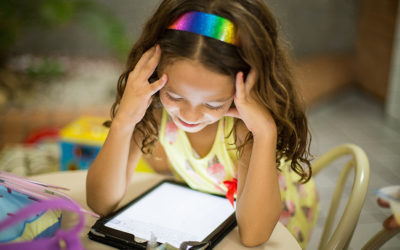Being a good citizen in the digital world is just as important as being one in the physical world. Digital citizenship means being respectful and responsible while online, and it requires critical thinking skills to navigate various online environments. As technology advances, students are spending more time online than ever before. As the school year ends and summer approaches, it’s crucial for teachers and parents to prepare students for safe online behavior.
Tips for Teachers
- Teach students about online safety: It’s important for teachers to educate students about the potential dangers of the internet and how to stay safe online.
- Set clear guidelines: Establish clear guidelines for online behavior in the classroom, whether in person or in a digital learning environment.
- Monitor online activity: By monitoring students’ online activity in the classroom, you are able to ensure students are following the district’s and school’s AUP (Acceptable Use Policy).
- Support open communication: Encourage students to talk to a trusted adult if they encounter any problems online. Help students understand what “trusted adult” might mean in their environment.
- Provide resources: Provide students with resources for safe online behavior, such as curriculum provided by Learning.com that covers topics such as digital citizenship, cyberbullying, information literacy and more.
Tips for Parents and Guardians
- Set rules and boundaries: Establish clear rules and boundaries for online behavior. This can include setting limits on screen time, restricting access to certain websites, and monitoring social media activity.
- Educate children about online safety: Work with the school to support the education of children about the potential dangers of the internet and how to stay safe online.
- Monitor online activity: Monitor your children’s online activity to ensure they are following the established rules and boundaries for screen time, accessing websites and social media interactions.
- Encourage open communication: Encourage children to talk to them if they encounter any problems online. This can help prevent issues from escalating and allow parents to address any concerns.
- Use parental controls: Use parental control software to restrict access to certain websites and monitor children’s online activity.
As students spend more time online, it’s important for teachers, parents and guardians to take steps to ensure student safety and privacy. By educating students about online safety, setting clear guidelines and boundaries, monitoring online activity, encouraging open communication, and using parental controls, we can help keep students safe online. With these tips in mind, we can help students enjoy the benefits of the internet while minimizing the risks.
With students having more free time during the summer, there comes more interest in spending time online.
The American Academy of Pediatrics (AAP) suggests using these guidelines for screen time to help set rules and boundaries for interacting with technology:
- Kindergarten to 5th grade: Children should have no more than one hour of screen time per day including time spent on television, computers, tablets, and smartphones.
- 6th grade to 12th grade: Provide consistent limits on the amount of time children spend on electronic media and the types of media they use.
- Help all children prioritize non-screen activities, such as physical activity, socializing, and reading.
It’s important to note that these guidelines are just recommendations, and that parents and guardians should use their own judgment when it comes to their children’s screen time.
Learning.com has a mission to help all students become successful in our digital world. Interested in some more resources? Check out this article by our partner Common Sense Education.

Kelli Erwin
Director of Education
Dr. Kelli Erwin has been in the field for K-12 education for over 20 years as a classroom teacher, technology lab teacher, GT specialist and a district-level instructional specialist. In her role as Director of Education for Learning.com, she incorporates her years of experience along with new trends and pedagogical understanding to design and create learning experiences and support resources to meet the varying needs of students and teachers.
Further Reading
Online Safety Definition & Basics
In today’s digital age where students are more connected than ever, online safety has become an important part of digital literacy education. With...
A Crash Course in Digital Footprints: Teaching K-12 Students the Importance of Online Contributions & Interactions
In today's interconnected world, every click, post and search we make online contributes to our digital footprint, a complex and often permanent...
Digital Divide Statistics: The 4 Digital Divides Affecting Students
Flashback to the mid-1990s: Vanilla Ice released “Ice Ice Baby;” Ross and Rachel were on a break; and Google, Amazon, and Hotmail (RIP) graced the...




